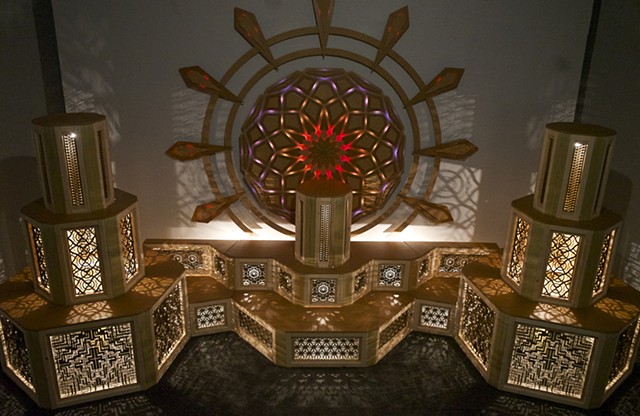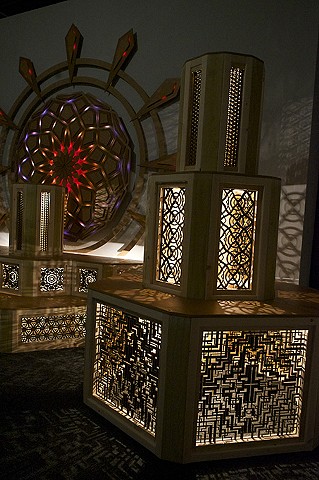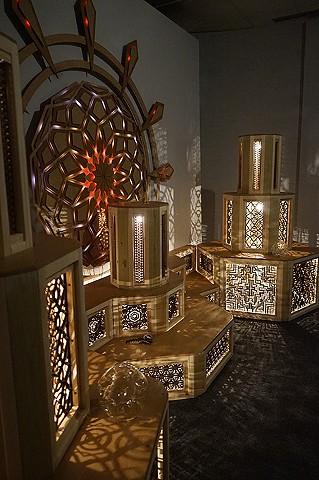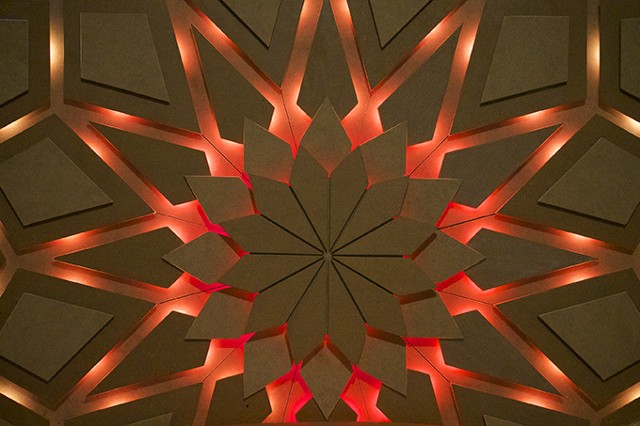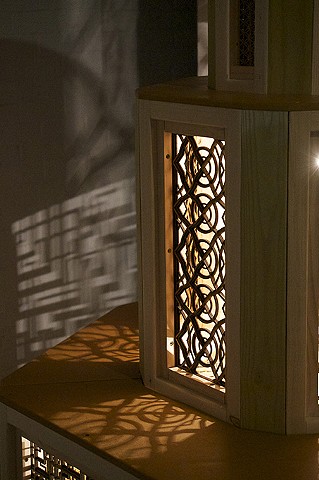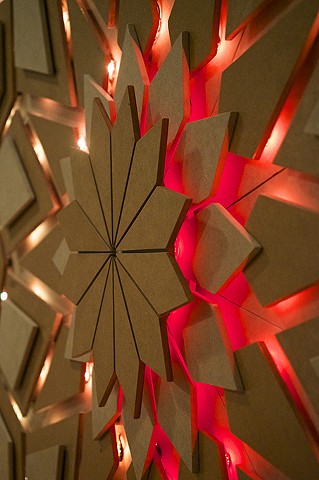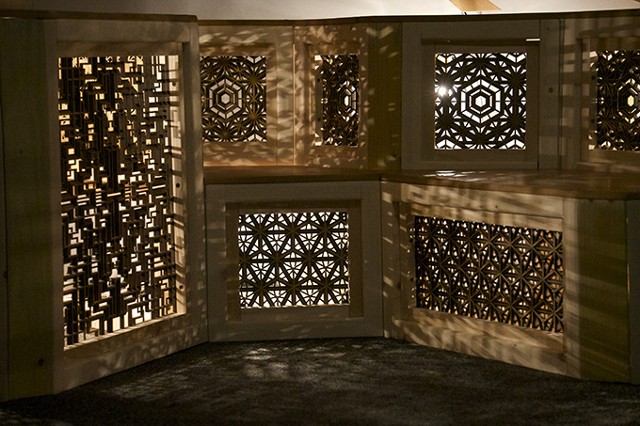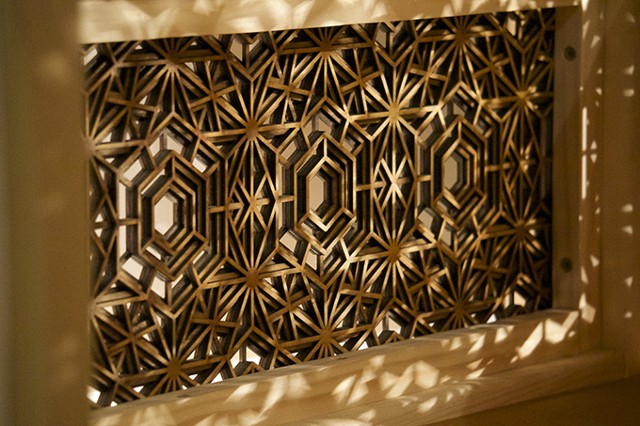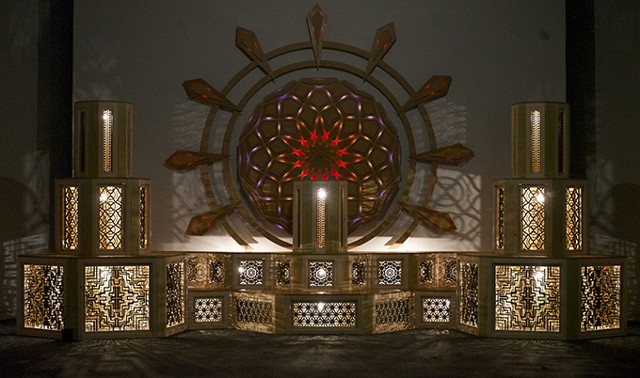Altar'd Perceptions 2016
Dating back to ancient civilizations, diverse patterns can be seen throughout history across the world. Every culture has generated their own unique forms over time, whether it be reference to nature, geometry, symbolic motifs, or highly designed ornamentation. The use of pattern exists in visual arts, architectural design, and ultimately at the root of biological existence. Some of the most intricate examples of pattern and geometries can be found in the “power centers” of various societies around the globe. Mesoamerican temples, Gothic Cathedrals in France, and Islamic Mosques in Iran are a few examples.
I am interested in pattern and design in relation to these architectural epicenters of communities. They serve as places for ritual, congregation, discussion of ideas, and ultimately anchor the growth and identity of culture. In my work, I reference these designs as a means to create a more unified vision for the future. Carrying the same energy and intention of my predecessors, I make work to inspire reflection, discussion, and positive growth.
Altar’d Perceptions is my take on an altar, a common structure located within places of worship and spirituality, used to give offerings and sacrifice as a means of transcendence. Utilizing geometric design for the structure and combining multiple patterns for the screens, this altar does not cater to any specific religion or belief system, more so unifying all to shift the perception that we are a collective whole. Spiritual practices are rather similar, stretched across culture and time, and disconnected into the belief that one can be higher than the other. It does not have to be this way. Acceptance of others beliefs and practices is essential to the growth of our existence. This altar is a hopeful vision for the future, that we can all share in the unification of humanity to come together and continue this journey, sharing a positive continuation of life as a global community.
The construction of this work reflects upon the ancient, present, and future, incorporating traditional woodworking methods, along with modern machine and digital fabrication. The entire installation was design digitally, with the structure then being translated and built by hand using modular techniques. The screens were all cut using a laser cutter machine, stained, and assembled by hand. The back panel mandala form was created using a CNC router, wired with over 150 individual LEDs, and coded using an Arduino micro controller. Light is used to project the patterns upon its surroundings, symbolizing the way we cast our thoughts and intentions out into the world.
Our perceptions and cerebration have a greater impact on our surroundings than we are consciously aware of, but through positive alteration, we can have a brighter future as a universal whole.
